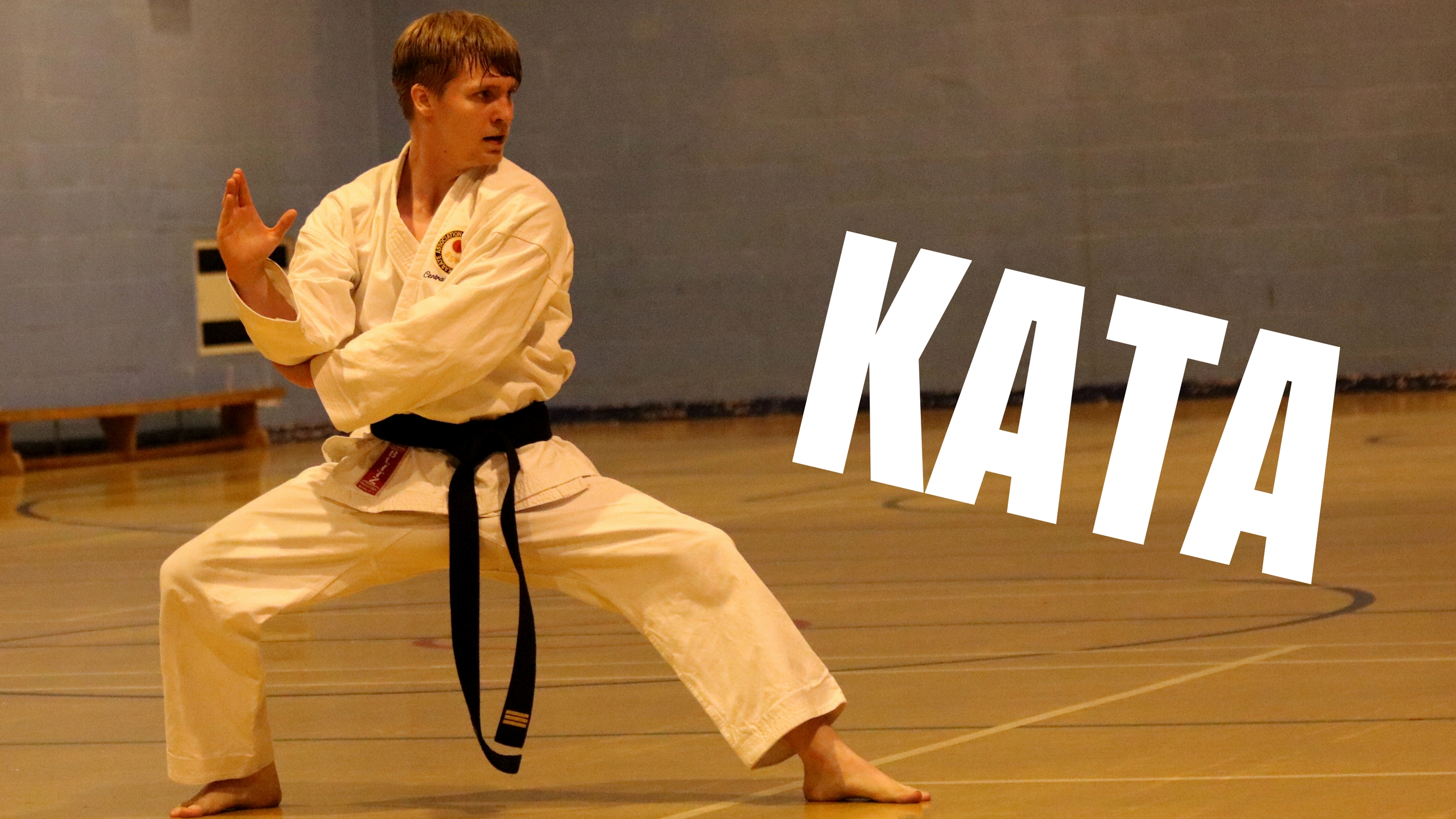What is Kata?
What is a Kata? Blimey. That is a big question. Kata means a lot of different things to different people. For the aged it is formal exercise. Beginners see it as an eloquent fight scene. For the advanced it is the culmination of masters experience full of hidden techniques to deepen their understanding of karate. Then competitors see it is a performance. Some would even say it is like a dance, but they are the ones that often receive the death stare of a thousand warriors. This is often right before retracting their comment (I wouldn’t exactly suggest arguing your point).
Before delving further into the philosophy of Katas, I will break it down.
What is a Kata in its simplest form?
Imagine you’re doing a long combination, or combining shorter combinations that you have done in your Kihon. Now, this combination is going to move in several directions, and occasionally include a unique element to differentiate itself i.e. a slow focus, jump, or grab.
Katas can be as simple as repeating the same two moves in different directions. However, they can be a hundred times harder once you encounter new techniques and stances that are specific to that kata and are otherwise fairly unpracticed. Most tend to find that the more athletic Katas, such as Unsu, to be harder as they feature jumps that test your physical ability, and not just your precision. Sometimes it is the length though, as some of the longest katas take a lot to remember in their entirety. However, from grade to grade, they will increase in difficulty and test your ability.
Kata Performance
Katas are typically used as a performance piece when grading. They are learnt and refined over a period of months, and sometimes even years. A grading usually rests on a good kata. It is a summary of your effort since your last grading, and showcases your dedication to progression.
The other increasingly common focus of a Kata is to perform it within a competition. The focus of these competitions varies, but marks more heavily than a kyu grading. Instead of looking for missing or incorrect steps, techniques, and kiais (since these are not expected), the judges will be looking at control, balance, pacing, strength, and speed. The overall performance will be critiqued, rather than the formation of techniques; this frequently makes the Kata look more elegant and deadly, all at the same time. Usually you can easily tell the difference between the two types of performance. One looks like they are going through the movements, sometimes as though they are counting the steps in their head to an almost rhythmic speed. However, the other is an explosively sharp and controlled performance, showcasing every element of their mastery.
Although competition Katas are performed to a higher standard, this helps to show the level at which a practitioner should perform at for any black belt grading. However, a grading tends to be more forgiving as it is at a higher intensity. The examiners also consider that it is more of hobby than those who compete, since the participant’s age and physical ability will vary a lot more.
Down the Rabbit Hole
So far you understand what a Kata is, and that it is a significantly large part of Karate. However, you only know of it as a performance piece, and maybe even as a way of practicing your combinations and individual techniques.
Sounds simple right?
A beginner will see it this way, and, depending on the club, can spend years believing this. Yet there is an underlying depth to Katas that is incomprehensible unless shown.
I refer to Bunkai. Every technique or series of techniques within a Kata has an application that can be used in a fighting scenario.
What was a slow focus is now a palm strike that then reaches behind someone’s head before following through with a kick. A simple block can be a grip break, or a strike to the groin or head. A step across could sweep someone’s leg from under them.
I know right, Mind Blown!
The universe has unraveled before you. You now know the secret to martial arts throughout history. You have the power!
In all honesty, that is the look I get on people’s faces when I explain what their Kata is actually doing. Suddenly, there is an appreciation for what they disregarded as a dance (and not just because of my intense stare or my heel in their gut).
What is Bunkai?
Bunkai is essentially the breaking down of a Kata into one or more techniques and applying them to various situations. You experiment and see how they can be used to manipulate an opponent and cause them harm (this is the fun bit for those fellow psychos out there).
It can be fairly easy to see, after all, a block is a block. It is when you begin to go beyond what you thought was the truth, that you find what the real applications can be. A block can be a strike or a grab, maybe even both.
Katas are meant to enhance your karate, not just through repetition, but through experimentation. Katas allow us to do that as we already know the set of moves. We can then apply this knowledge to not only deepen our understanding of each Kata, but apply it to our Kumite, to street defence, and even to assist with the performance.
It does not stop there
Katas are a huge part of karate as they are accessible to everyone. After all they are a great way of training your brain due to the memory and problem solving based activities.
Most of all though, it never seems to stop. Even if you had learnt all of the Katas in your style, there is so much more you can do with them. Do not even get me started on performing Katas backwards and mirror image, or worse, backwards mirror image.
Ultimately, Kata is the root of karate and teaches us everything from basic techniques to the most advance takedowns and manipulations (some of which may be bordering on GBH or manslaughter, but it’s all fun and games really).
If you are interested in knowing more about my Karate tuition – click here.
EmpoweringPT are also running Online Karate Sessions too (click for information). We also have a great range of helpful karate videos on Youtube – take a look.
Become Empowered Today! Call 0750 333 6773 or email James Edwards.

